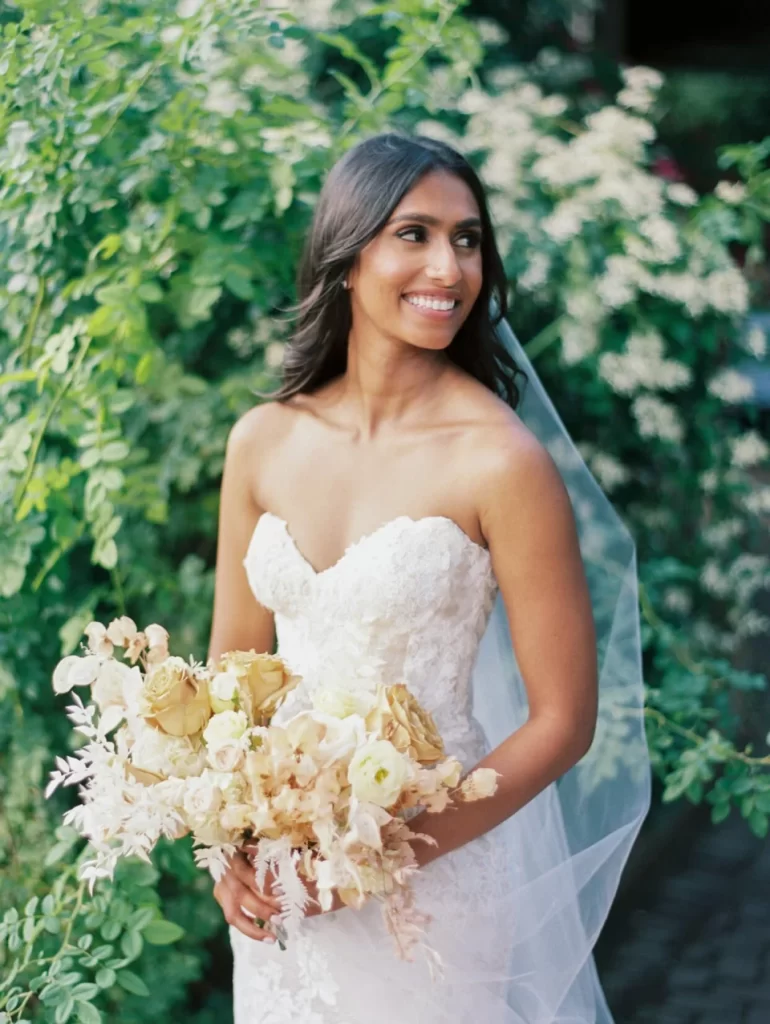
After all the time you’ve spent searching bridal magazines, making a comprehensive Pinterest fantasy wedding dress board, and trying on everything from mermaid gowns to prom dresses at bridal boutiques, you don’t want to risk the final look of your dream dress by choosing the wrong tailor for your alterations. The alteration process can turn a dress you already love into one that is flattering from every angle, or it can help you achieve a bigger vision by making more elaborate alterations to your heirloom gown. Either way, the tailor you hire will have a behind-the-scenes but extremely critical impact on your big day.
“With wedding dress changes, there needs to be a trust,” says costume engineer Sara Rothan, Carolina Herrara’s former alterations manager. “It’s a big deal, and the more changes that happen, the greater the trust needs to be.”
Related: Everything Your Bridal Party Needs to Know About Bridesmaid Dress Changes
Ask around.
The first step is to look for a few alteration stores or tailors to choose from, and while a basic Google search can show you potential listings in your area, you should also try a more old-fashioned approach: ask around. “Word of mouth is the best advertising, but really, it’s also the best case scenario for brides,” Rosen says. Getting purchasing advice from your friends and family can provide you with important information on everything from tailor personalities to unexpected charges, and better prepare you for your experience.
Schedule face-to-face meetings.
When meeting with a potential tailor, be prepared with your thoughts on the dress and questions about the schedule. Sara Teixeira of The Tailory in Philadelphia suggests going over the timeline together to determine how many fittings you’ll need, how far away your dress is from being ready for the wedding, and whether you’ll have time to make changes after the final fitting. “If there are multiple fittings and the final fitting is close to the wedding, it shows that the seamstress cares about the process and getting the end result to fit the client’s vision perfectly,” she says.
Your seamstress should be prepared for you every step of the way, Rothan says. From the unfinished version you’ll see at the second fitting to any final changes this will make to the original dress.
Confirm the tailor’s skills.
The face-to-face meeting also gives you the opportunity to see photos or samples of the finished product, so you can confirm the tailor’s proficiency and skill. If your gown requires a major replacement that the tailor insists can’t be made, ask someone else: In some cases, Rosen says, the work may be too complicated for the tailor’s skills, and you may need to move on to a project with someone willing to take on more intense work.
Ask the question.
During your decorating process, expect the right seamstress to listen to your questions and concerns – don’t let you feel silly for wondering if the low slung neckline is a little too low, the back of your strapless dress is a little too tight, or the hemline is an inch shorter than you expected. Your seamstress should listen and respond thoughtfully, either by explaining why the dress must fit and be sewn a certain way, or by offering solutions to fix it.
“I think the most important thing is that the bride feels their concerns are being addressed,” Rosen says. “Under no circumstances would a bride ask me a question that I would be angry about, no matter how trivial, and I would be worried if the tailor waved you off and didn’t answer your question.”
Teixeira agrees. “If you feel like you’re not being heard and your concerns are not being addressed, it’s time to go elsewhere,” she says. “If you choose the right professional, they’ll make you feel like they care about the outfit and the overall experience of the bride.”

